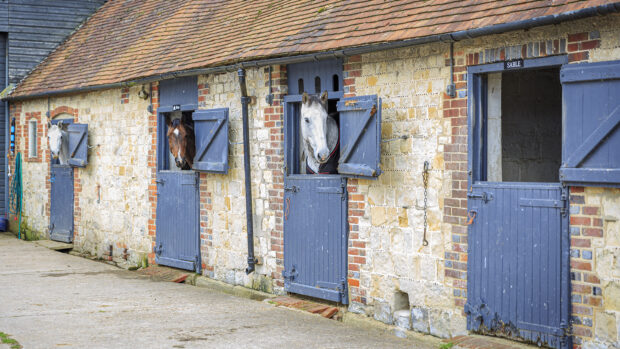A Horse & Hound Podcast Advertising Series with Dengie
Welcome to the first episode of the Dengie digestive health series, a Horse & Hound Podcast advertising series, in which our regular host Pippa Roome chats to Dengie’s technical and product development manager Katie Williams, and equine vet Julie Shrubb about how the horse’s digestive system works, what challenges the gut faces and why gastric ulcers occur in horses.
This is the first in a three-part podcast series, produced in partnership with Dengie. You can listen online here or via your favourite podcast app.

How to listen to the Horse & Hound Podcast: a beginner’s guide to podcasts
Inside the Dengie digestive health series podcast: episode one
Equine vet Julie Shrubb, who is an internal medicine specialist working out of Ashbrook Equine Hospital in Cheshire, explains how the stomach is formed and the two different types of stomach ulcers commonly found in horses.
“Horses are quite unusual in that they have two parts to their stomach,” says Julie. “They have two very distinct parts with different linings. The bottom part of their stomach is lined by glandular epithelium, so we call that the glandular part. It is very similar to our stomachs and other carnivores as it produces lots of acid and produces enzymes to break down the food.
“The top part of the stomach is lined by something called stratified squamous epithelium and we’ll often call this the squamous part of the stomach. The lining in this top part is actually very poorly resistant to acid. It has not evolved to be particularly good with acid, which seems like a design flaw really, but horses have evolved to graze a large portion of the time and trickle feed. In a normal grazing horse, if you go into the stomach, you’ll see like a fibrous mat and all the acid, that very low pH, will be down the very bottom of the stomach and this top part of the stomach isn’t very acidic at all.
“In a sort of normal environment, it doesn’t matter that this squamous epithelium – the lining of this top part – isn’t very resistant to acid. But that squamous epithelium is the same type that lines our oesophagus going down into the stomach. So the analogy in people would be similar to heartburn, [when acid] goes up the oesophagus. It’s just that horses have this lining in their stomach as well.
“When we’re talking about ulcers, we really need to know which type we’re talking about, because there are two very distinct types. We know a lot more about the risk factors and the dietary influences of squamous ulceration – that’s ulcers affecting the top part of the stomach. And we know a lot less about the risk factors of glandular ulcers, down at the bottom part of the stomach. But we have been looking and diagnosing those probably for 10 to 15 years now. Often when people talk about ulcers, they’re talking about the top part, but we do need to differentiate and know what we’re talking about because they have different treatments.”
Listen now to episode one of the Dengie digestive health series podcast for information about equine digestive health and gastric ulcers in horses.




